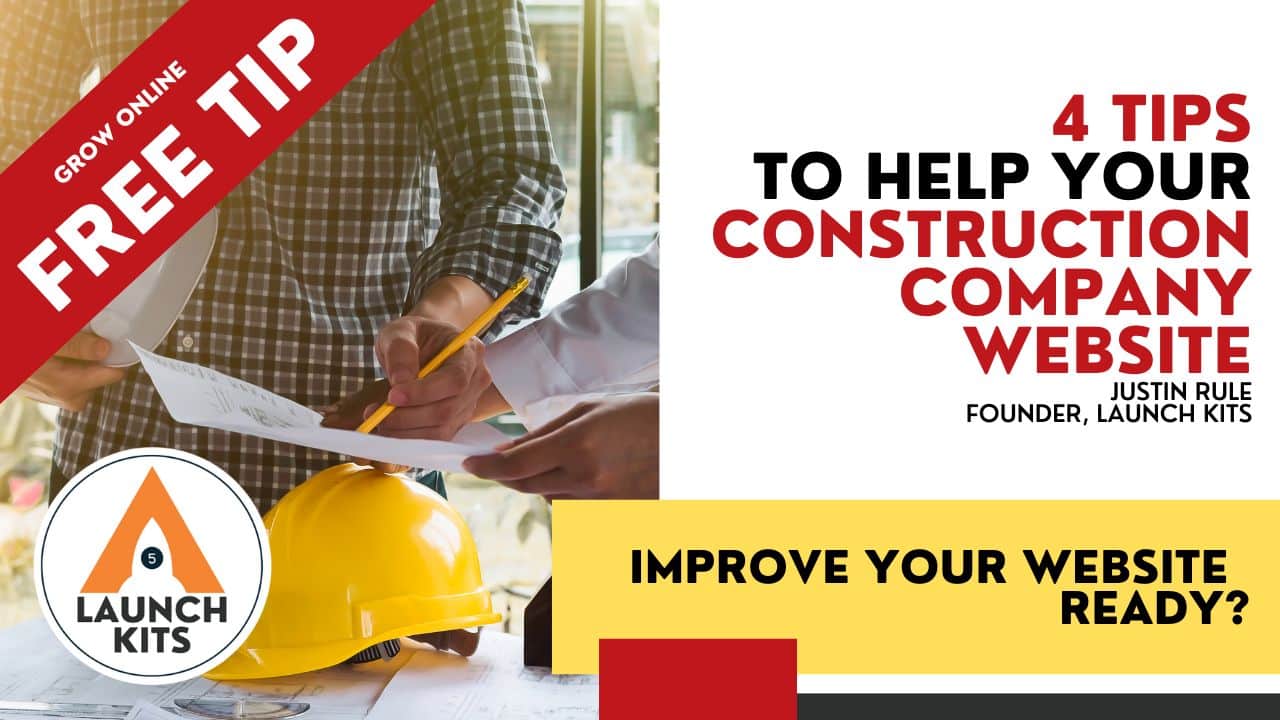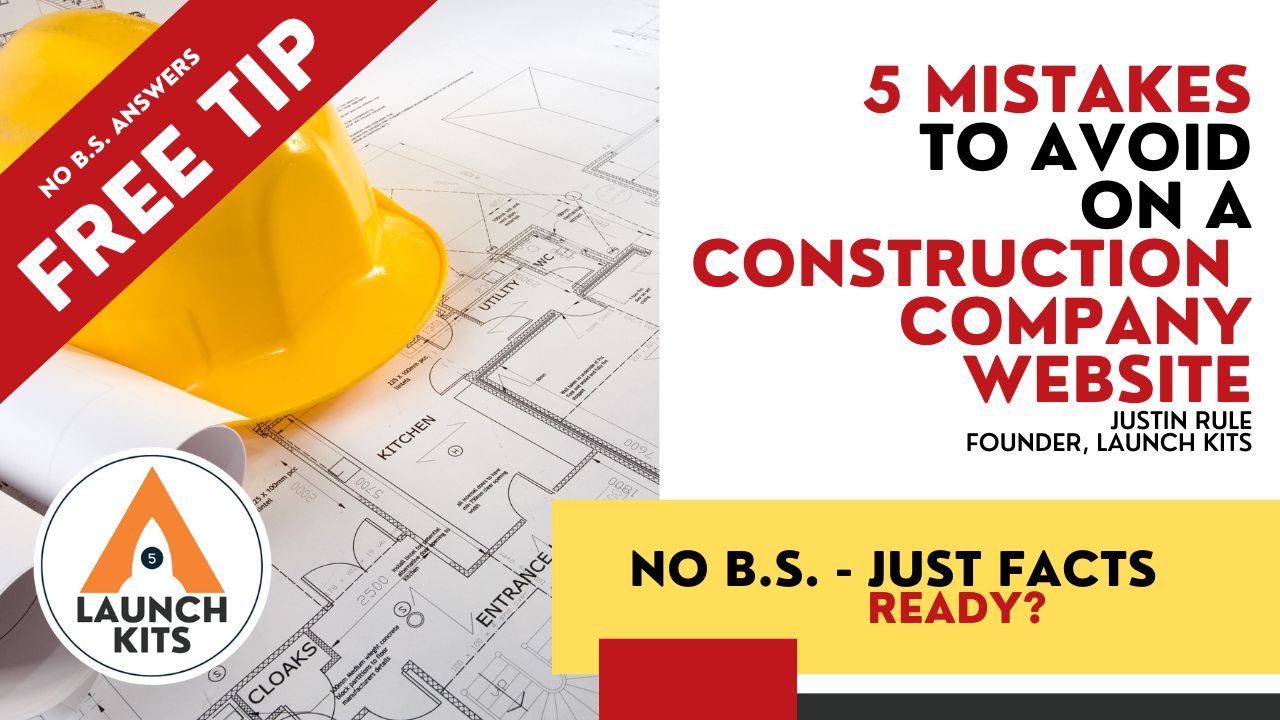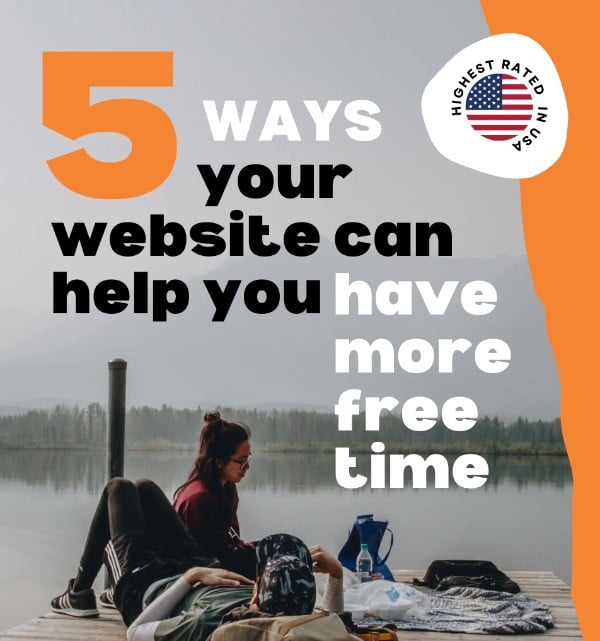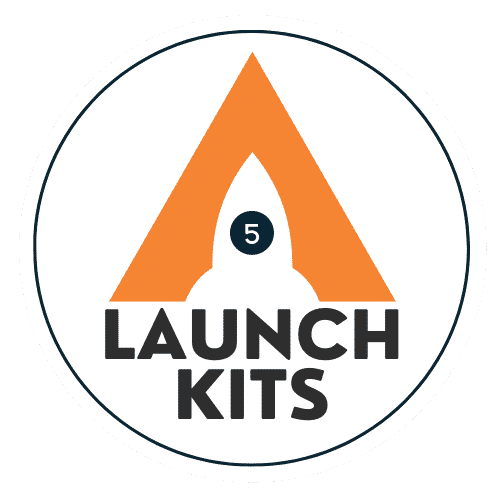Creating a website for your construction company may seem daunting, but it’s essential for reaching new clients and surviving in today’s digital marketplace. At Launch Kits, we launch websites using a proprietary framework that combines aesthetics and functionality with an emphasis on conversion.
After launching over a thousand websites, we’re sharing ten ways construction companies can apply our conversion-based strategies to drive new business.
Here’s A Quick Overview of the Top 10 Ways To Have a Construction Website That Converts:
- Think mobile
- Make it easy to get a quote
- Include service area pages
- Include service specific pages
- Show visitors who you are on an “About” page
- Share free tips
- Make sure your website loads fast
- Speak in your customer’s language
- Use real and professional images of your work
- Keep it fresh
Let’s get into the details!
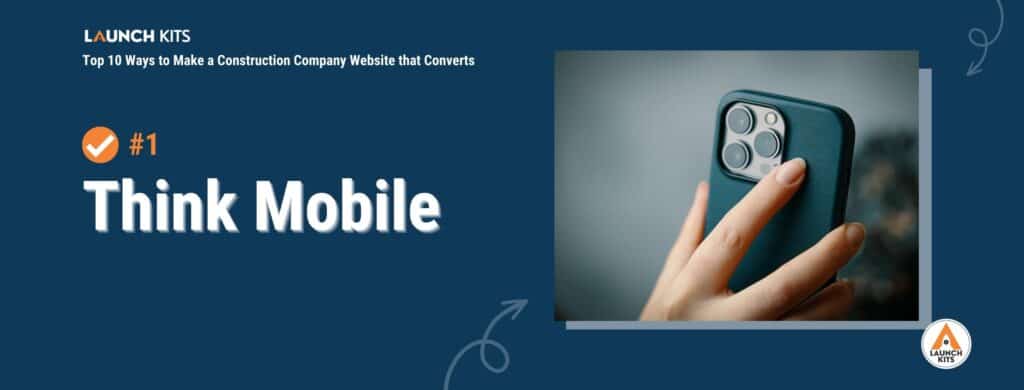
1.Think Mobile
It should be no surprise that potential customers are using their mobile devices to check your website out. Analyzing your website’s analytics (if you’re not, you should be) will likely reveal that at least 50% of your traffic comes from mobile devices. The percentage of mobile vs. desktop users only continues to rise every year. In some industries, mobile users dominate traffic with 80% or more.
For construction companies, potential customers typically make decisions while working, at home, or in the evenings. They are looking for quick and easy access to view your work, company info, and contact details. Having a mobile-minded website that is responsive on any device will make your website not only more accessible but also increase your conversion rates.
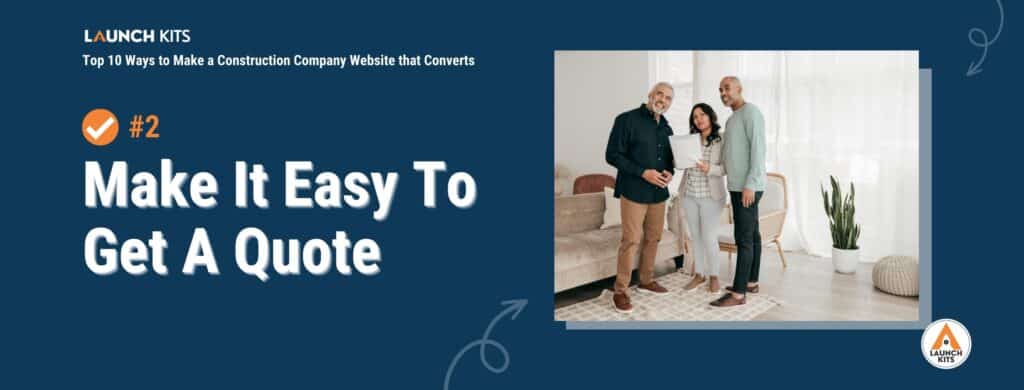
2. Make It Easy To Get A Quote
One of the most important features of construction company websites is the ability to request a quote quickly and easily. This should be frictionless from start to finish for potential customers. Otherwise, they may move on to a competitor offering a better experience.
If you rely solely on your tap-to-call button, you’re missing potential leads that call outside your business hours. Implementing an easy quoting system on your website lets your potential customers keep things on their terms. They can schedule on their own time, even after hours, increasing the likelihood of converting into a sale. For a free, low-risk option, try Calendly. It’s easy to integrate into your website and allows companies to customize their scheduling options. (p.s. for other free tools to help you out – check out this article)
For requesting a quote, it’s important to think in the place of a potential customer browsing your website for the first time with minimal information about your company. Placing a “Request a Quote” button before introducing who you are or what you do can leave your visitors saying, “Wait, what are they asking me to do?” A better experience is to offer clear pathways to learn about your company, services, and recent projects and then placing easy to find “Request a Quote” buttons or forms throughout your website. The placement should be logical at the end of each service or project page, on your header and footer, or on a pop-up that appears after scrolling. Above all, the process should be simple.

3. Include Service Area Pages
In a hyper-local industry, construction companies should prioritize service area pages. Google uses service area pages to understand which regions you operate in, which helps connect you with your target audience. For example, if you’re in Pennsylvania, you should have a Lancaster County Construction Projects landing page focusing on projects you’ve done in that area. To support your credibility, highlight video or text testimonials from those in Lancaster County.
Each county has its own style and unique features, so creating service area pages highlighting these differences gives confidence to the potential customer that you have experience in their local area. Visually it proves that you’ve done work in this community, but it also helps Google’s indexing which builds your brand.
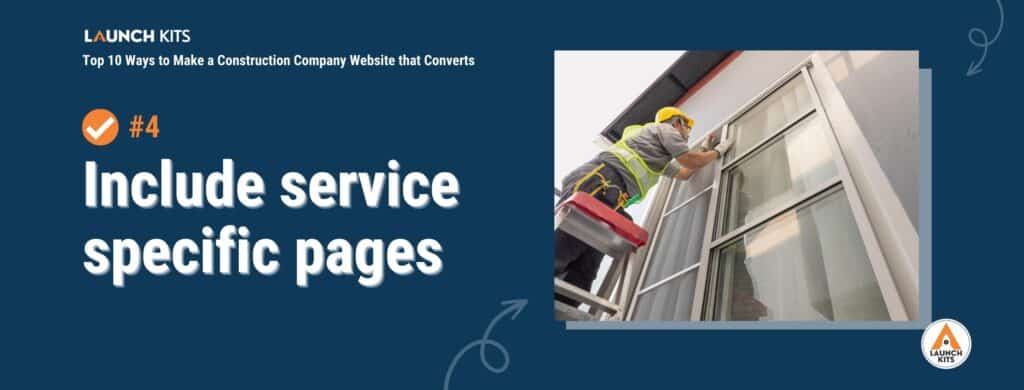
4. Include service specific pages
A great way to distinguish your construction company from its competition is service-specific landing pages. These pages should answer questions like:
- “What construction projects do they do?”
- “Do they do additions and remodeling?”
- “Do they do custom garages?”
- “Do they do pole barns?”
- “Have they done event venues?”
- “What experience do they have with pavilions?”
- “What about new house builds?”
Ensure that each service-specific page talks to a specific target group about a specific project. Answer those burning questions about custom garages and new home builds in a way that equips your potential customers with the information they need to feel confident in your abilities.

5. Show visitors who you are on an “About” page
An unconventional conversion tip is directed toward the owners of construction companies. Having a page that pulls the owners out from behind the brand, speaks to who they are, what they love, and their connection to the community helps creates connections with your potential customers.
Highlight the connections owners have with their community, like local initiatives they’re a part of, events they sponsor, local government positions they hold, or charities they support. These small connections can make potential customers more likely to work with you beyond just the work you do.
Today, people are doing less price shopping and more brand shopping. As consumers, we like to work with people behind the brand rather than just the brand itself. So step out from behind the shadow a little bit.
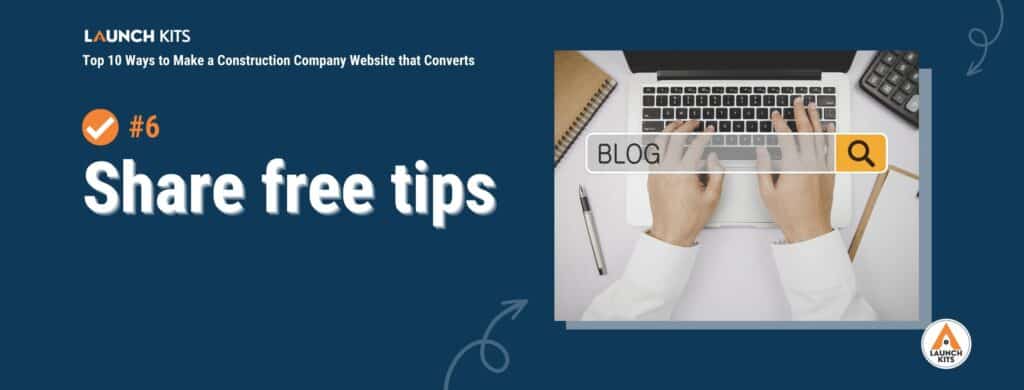
6. Share free tips
Another powerful conversion strategy for construction company websites is to offer visitors free tips and resources. If these free tips are easy to access and provide real value, you start gaining trust with your potential customers even before meeting them.
If someone is looking to build a 1,000 sq. ft. garage, equip them with information like:
- 5 Design Ideas for 1,000 sq. ft. Spaces
- 10 Common Mistakes to Avoid When Building a Garage
- How to Choose the Right Garage Door
- Top 4 Tips to Maximize Square Footage
- Pros and Cons of an Eco-Friendly Roof
A Launch Kit client implements this strategy by offering free home designs that anyone can access. A potential client can view those designs, contact the company, and reference a design they want to build, already feeling confident in the construction company’s abilities.
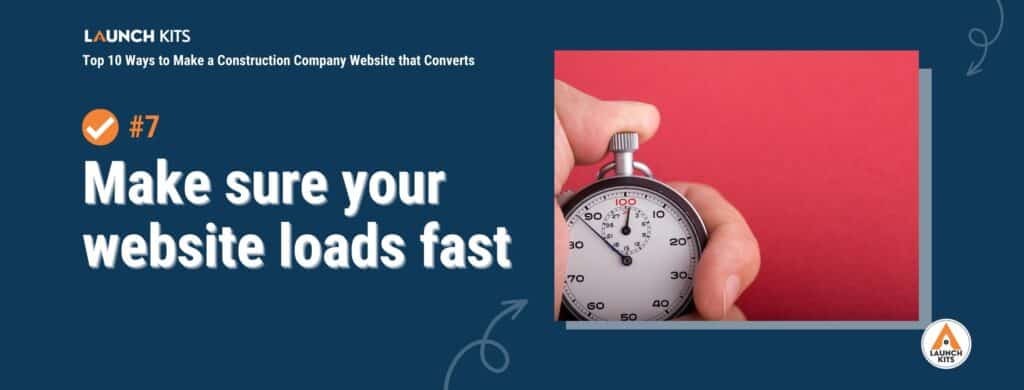
7. Make sure your website loads fast
A website that loads quickly is essential for a frictionless user experience and increasing conversion rates. No one wants to wait for a slow website when they’re at the awareness stage in their buyer’s journey.
You may have a cool background video, animations, or large photo galleries, but if they’re not optimized for mobile and desktop devices, they can slow down your website. It’s great to integrate cutting-edge tools like chatbots, but never sacrifice your loading speed for flashy features.
For construction companies, speed needs to be king. Google won’t rank websites that don’t pass their speed score test, meaning your website won’t even appear in search results if it’s too slow. As a rule of thumb, aim for a website that loads within four seconds. Beyond that, you risk losing potential customers and hurting your search engine rankings.

8. Speak in your customer’s language
When creating content for your construction company website, it’s crucial to speak your customer’s language. In this industry, the average homeowner may not understand industry jargon, technical terms, or abbreviations. To effectively communicate with your target audience, it’s best to keep the language simple and easy to understand.
You may understand jargon regarding permits, zoning, or flood and storm management, but not all potential customers will. Don’t make the mistake of talking over their heads that could lead to confusion and a lack of trust in your company’s ability to serve their needs effectively. That’s not to say the details aren’t important, but rather wait until they are at the decision-making stage of their buyer’s journey before diving into technical details.
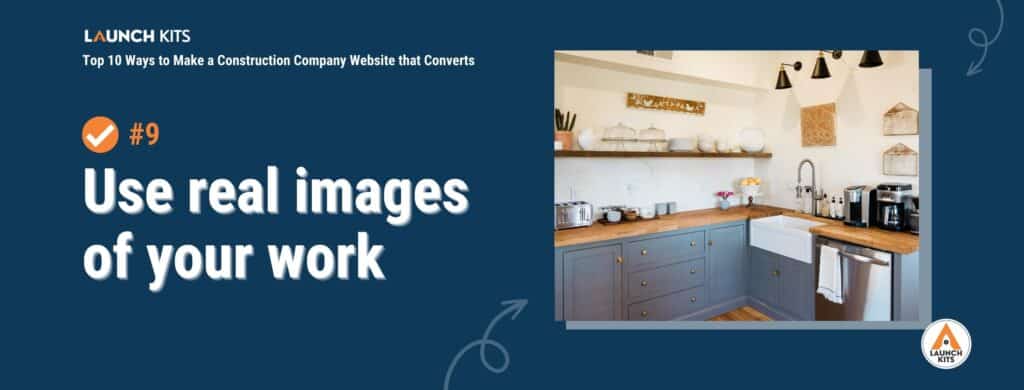
9. Use real and professional images of your work
One of the most common mistakes for construction company websites is using low-quality or stock images. When potential customers visit your website, they want to see real and professional images of your work – not generic images that could belong to any company in the industry.
If you’re just starting, you might not have a lot of completed projects to showcase and may have to supplement with stock images, but it’s important to keep those images to a minimum and focus on highlighting your unique work. Hiring a professional photographer to capture drone footage of a job site, progress shots, and high-quality images of completed projects can make a big difference in how potential customers perceive you and the quality of work they can expect from you.
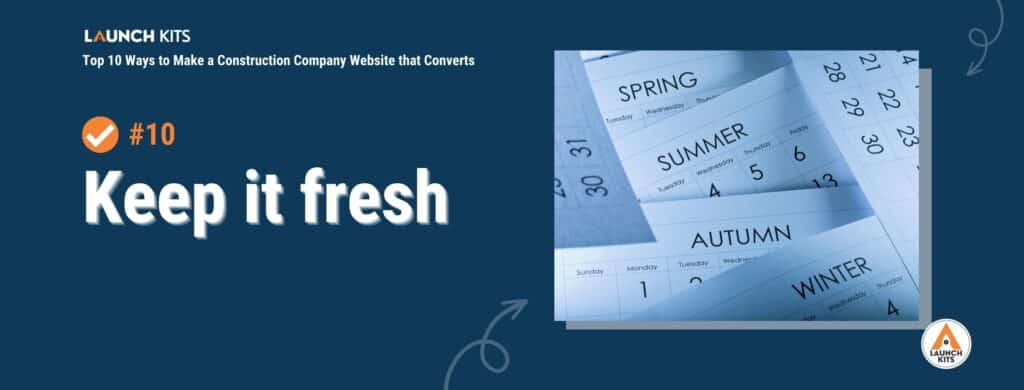
10. Keep it fresh
Your website should be updated regularly to keep it fresh and seasonal. By update your images seasonally, you’re able to showcase your work in different environments and weather conditions. Similarly, if it’s the middle of July, you don’t want to feature an image of a house with snow on the roof as it creates a disconnect with the visitor and makes them question if your website is still active.
Refreshing doesn’t just apply to your images but also to your copy. If you have a blog that shares construction tips or industry news, be sure to update it regularly with relevant and timely information. Again, if it’s the middle of July and visitors see your last post was from Thanksgiving, it creates a disconnect. So make sure your website, from images to content, is fresh and seasonal.
Get to Work Building A Website That Converts
By applying these top 10 ways to build a construction company website that converts, you’ll be set up for success and on your way to attracting more leads and converting them into customers.
If you’re looking for more tips on improving your website, read our tips for getting found online by Google. Or, check out our big four C’s on how to get a construction company website to grow its online presence. Finally, for more information on avoiding common pitfalls, read these five mistakes businesses make with their websites and how to avoid them.
At Launch Kits, we’re all about seeing businesses grow and impact their communities in a positive way, and a key part of making that happen is a website that converts.


